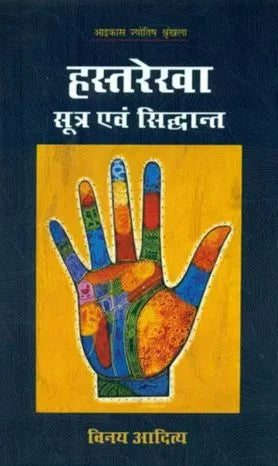Hasthrekha Sutra Evam Siddhant Hindi
Hasthrekha Sutra Evam Siddhant Hindi is backordered and will ship as soon as it is back in stock.
Couldn't load pickup availability
Genuine Products Guarantee
Genuine Products Guarantee
We guarantee 100% genuine products, and if proven otherwise, we will compensate you with 10 times the product's cost.
Delivery and Shipping
Delivery and Shipping
Products are generally ready for dispatch within 1 day and typically reach you in 3 to 5 days.
Book Name: हस्तरेखा शास्त्र (Palmistry Science)
Author: Vinay Aditya
Publisher: ICAS Publication
Edition: 2019
ISBN: 9788193770481
Pages: 222 (Through Color and B/W Illustrations)
Cover: Paperback
Dimensions: 24 cm x 18 cm
Weight: 440 gm
Origin: India
Book Overview:
This book delves into Palmistry (हस्तरेखा शास्त्र), a fascinating and ancient science that studies the lines, mounts, and other features of the hands to gain insights into an individual's personality, behavior, and future. The author, Vinay Aditya, presents the study of Palmistry in a logical, scientific, and rational manner, breaking away from the mysterious and occult image traditionally associated with the practice.
The book emphasizes that Palmistry should be viewed as a practical, useful science, providing a clear and structured way to understand human traits and destinies. Rather than being confined to mystical realms or superstitions, Palmistry is explained as an insightful, science-based discipline that can complement other fields like acupuncture and reflexology, which were once also considered unconventional but have gained acceptance over time.
Key Features:
-
Scientific Approach: The book explains Palmistry as a logical and reasoned discipline, emphasizing its applicability to everyday life and how it can be integrated into other rational sciences.
-
Illustrated with Color and B/W Images: Richly illustrated with a mix of color and black-and-white illustrations, the book visually explains the various lines, mounts, and features found on the palm and their meanings.
-
Practical Insights: It gives a clear and practical understanding of Palmistry, illustrating how it can be used to assess various aspects of life, including career, relationships, and health.
-
Historical and Cultural Insights: The book includes references to Cheiro, one of the most famous Western Palmists, who respected the ancient Indian knowledge of Palmistry and used it to further his own expertise.
-
Connection with Other Sciences: It draws parallels with other traditional sciences like Acupuncture, Acupressure, and Reflexology, offering readers a holistic view of how these disciplines interconnect.
Themes Explored:
-
The Practical Use of Palmistry: The book highlights how Palmistry can be used practically to understand personality, emotional tendencies, life purpose, and other characteristics of a person.
-
Ancient Knowledge: There is a focus on how Palmistry is not merely an occult practice but has roots in ancient Indian knowledge, which has long been respected and passed down through generations.
-
The Role of Hand Features: The book provides detailed descriptions of various hand features, their meanings, and how these can offer valuable insights into the person’s life.
Ideal For:
-
Students of Palmistry who want a scientifically grounded yet insightful approach to the subject.
-
People interested in Self-Discovery: Anyone curious about the deep connection between the hands and one's personality, and how they influence life choices.
-
Astrologers and Healers: Those practicing related sciences like Vedic Astrology, Acupuncture, and Reflexology who want to integrate Palmistry into their work.
This work by Vinay Aditya offers a structured, detailed, and well-illustrated exploration of Palmistry, making it accessible for both beginners and seasoned practitioners. It challenges traditional views of Palmistry, presenting it as a science rather than a mystical or occult practice.
Would you like a more in-depth analysis of specific chapters, or any further details on particular aspects of Palmistry covered in this book?





